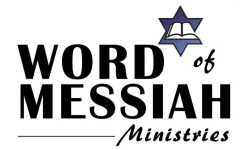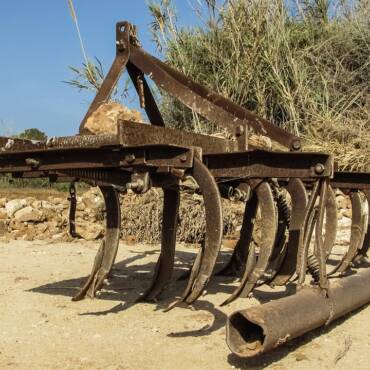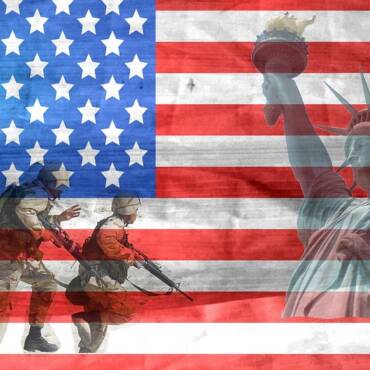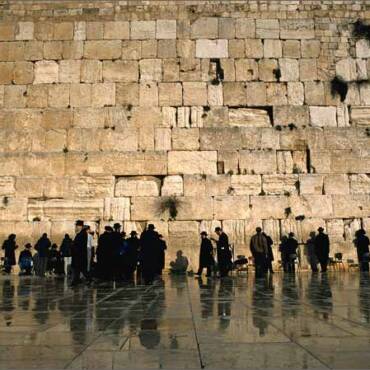The Light of Tabernacles
When Yeshua lived on earth, perhaps the most anticipated and festive feast of the year was The Feast of Tabernacles (Sukkot in Hebrew). During this feast, each family would live in a temporary dwelling (sukkah) to remember and relive God’s protection over them when they wandered in Egypt. This eight-day festival was one of the three “pilgrim feasts” where all Israelites were to “appear before the Lord” (Deut. 16:16) in Jerusalem. As so many people came together to celebrate this Feast, other Sukkot traditions developed over the years to illustrate its meaning. One such tradition involved massive Golden Candlesticks.
On the first day of the feast, three seventy-five foot high candlesticks were erected in the Temple in the “Court of Women,” where the treasury was located. This is the very same treasury where Messiah noted a poor widow who gave her sacrificial gift of two small coins (Mark 12:41-42). The Court of Women was a place where all worshippers, men and women alike, could enter and experience the joy of the Feast of Tabernacles around the great candlesticks.
We read in the Talmud, Rabbinical writings which provide an accurate account of first century Jewish life, that the light from these huge candles would give light to all the courtyards of Jerusalem! In order to light the candles, young men would climb up several ladders to reach the wicks which were made from old priestly garments. The Talmud states that at the base of the candles, “Men of piety and good deeds would dance… with lighted torches in their hands, singing songs and praises. Levites without number with harps, lyres, cymbals, trumpets, and other musical instruments (were) there upon the fifteen steps leading down from the Court of the Gentiles to the Court of the Women.” (Sukkah 51 a-b; 53a)
These celebrations would continue for seven full days, then the lights were extinguished on the eighth and final day of the feast, for a holy and solemn assembly (Lev. 23:36).
Since the Feast of Tabernacles is a harvest festival (Lev. 23:39), one might question the purpose of this tradition revolving around these great candles in the Temple. The prophets of the Hebrew Scriptures help us to understand its meaning:
The prophet Zechariah forever identified the Feast of Tabernacles with the Kingdom reign of the Lord, as a time when all the nations, “will go up from year to year to worship the King, the Lord of Hosts, and to celebrate the Feast of Tabernacles.” (Zech. 14:16) We don’t know everything we’ll be doing when Yeshua reigns as King from Jerusalem, but we do know that we’ll be celebrating this feast. Zechariah teaches that this harvest celebration is pointing toward the future harvest of the nations to Messiah!
But what does the light from the candlesticks have to do with the Kingdom? Looking to that day, the prophets explain:
“No longer will you have the sun for light by day, nor for brightness will the moon give you light; but you will have the Lord for an everlasting light, and your God will be your glory.” (Is. 60:19, see also Zech 14:6-7)
In the Book of Revelation, John makes mention of this prophecy in Isaiah as he looks to the eternal period when the Lord Himself is our everlasting light. (Rev. 21:23; 22:5)
In traditional Judaism, this future time is simply referred to as “the world to come” (olam haba), or “the days of Messiah.” Today we may need various lights in order to see, but the candles of Sukkot pictured the hope of an age in which no other light but the Lord will be needed. The Kingdom to which the Feast of Tabernacles points is a time when we will no longer walk in the darkness of sin. Rather, we will walk in the gladness, salvation, and freedom of the Lord’s light.
Isaiah prophesied that the Messiah of Israel would be a light to all the nations of the world (Is. 42:6, 49:6). Thus, the rabbis also consistently saw Messiah as the true light of God. (Berachot 29a; Peskita Rabbati 161f; Exodus Rabbah 31:10…)
So what did Yeshua do when the Feast of Tabernacles was celebrated during His lifetime? We see in the book of John that at Sukkot, Yeshua went up to the Temple (John 7:3, 37-39; 8). By the time He arrived, the pilgrims who had come from around the world to attend the Feast had been celebrating joyously for seven days and had now come to the eighth day, the solemn assembly. With the lights from the candles now extinguished, how dim the scene must have appeared. It was at this time that Messiah came to the treasury, (John 8:20), and there by the great, but extinguished candles, declared,
“I am the light of the world; he who follows Me will not walk in darkness, but will have the Light of Life.” (John 8:12)
Messiah is the Light. He is the personal Light of God, for He said, “I am...” He alone is the revelation of God’s glory. He is the perpetual Light of God, as Yeshua professed to be the only inexhaustible source of spiritual nourishment. The candlesticks were to be extinguished each year after the Feast, but His light would remain. He is the perfect Light of God, the Light by which eternal direction can be established for our lives. And He is the powerful light of God, the “Light of the world,” able to make the difference for everyone. Regardless of culture and heritage, all people need His light.
Yeshua is the only Light worth following. So if you have the Light, turn it on; seek His guidance. And if you don’t yet have His Light, you can have it right now in your soul by trusting in Yeshua! By following Yeshua daily, you will never walk in darkness, but will have the “Light of Life.” This Feast of Tabernacles, may you anticipate His glorious Kingdom by shining the Light of Messiah to all in this darkened world.




Add Comment